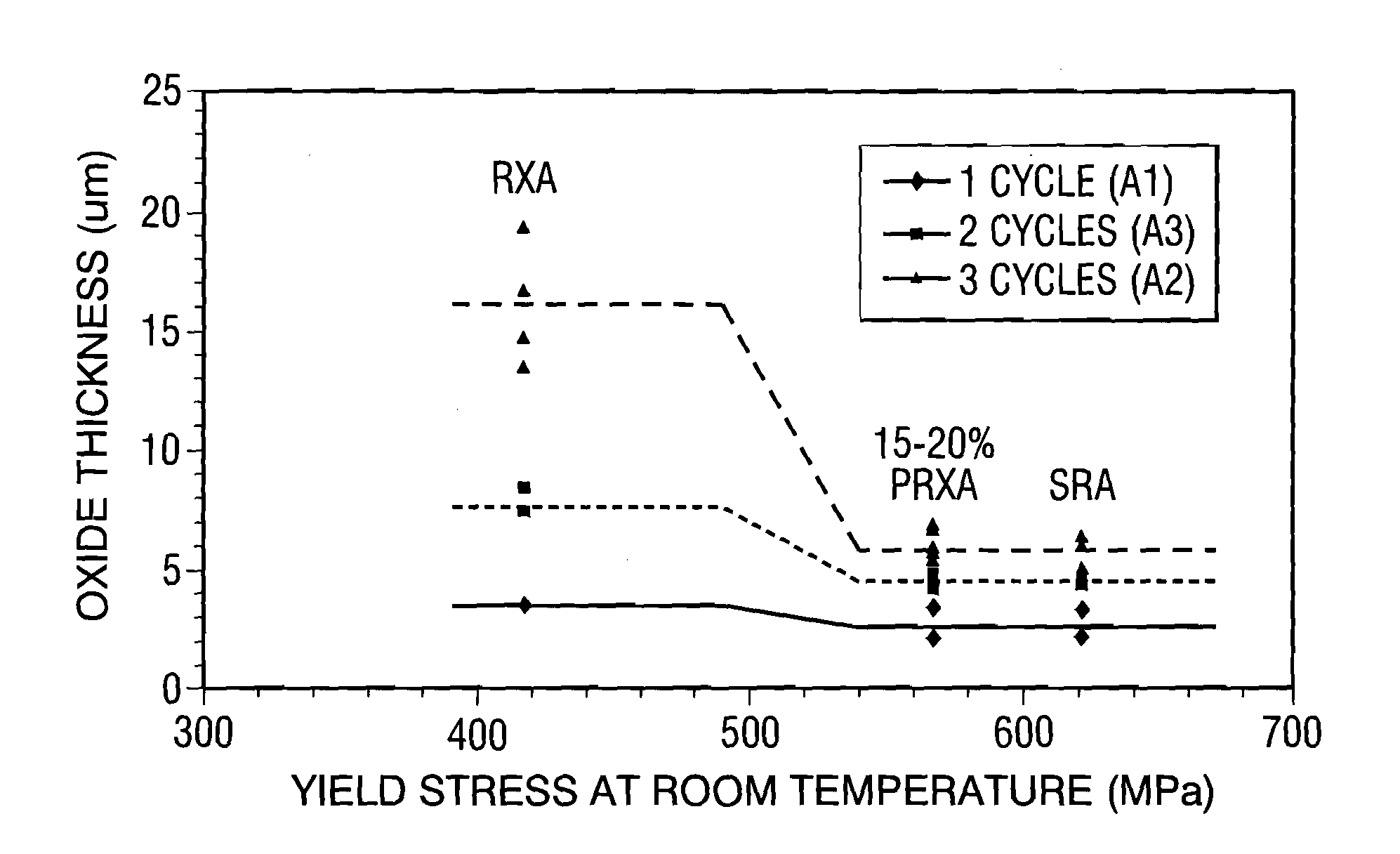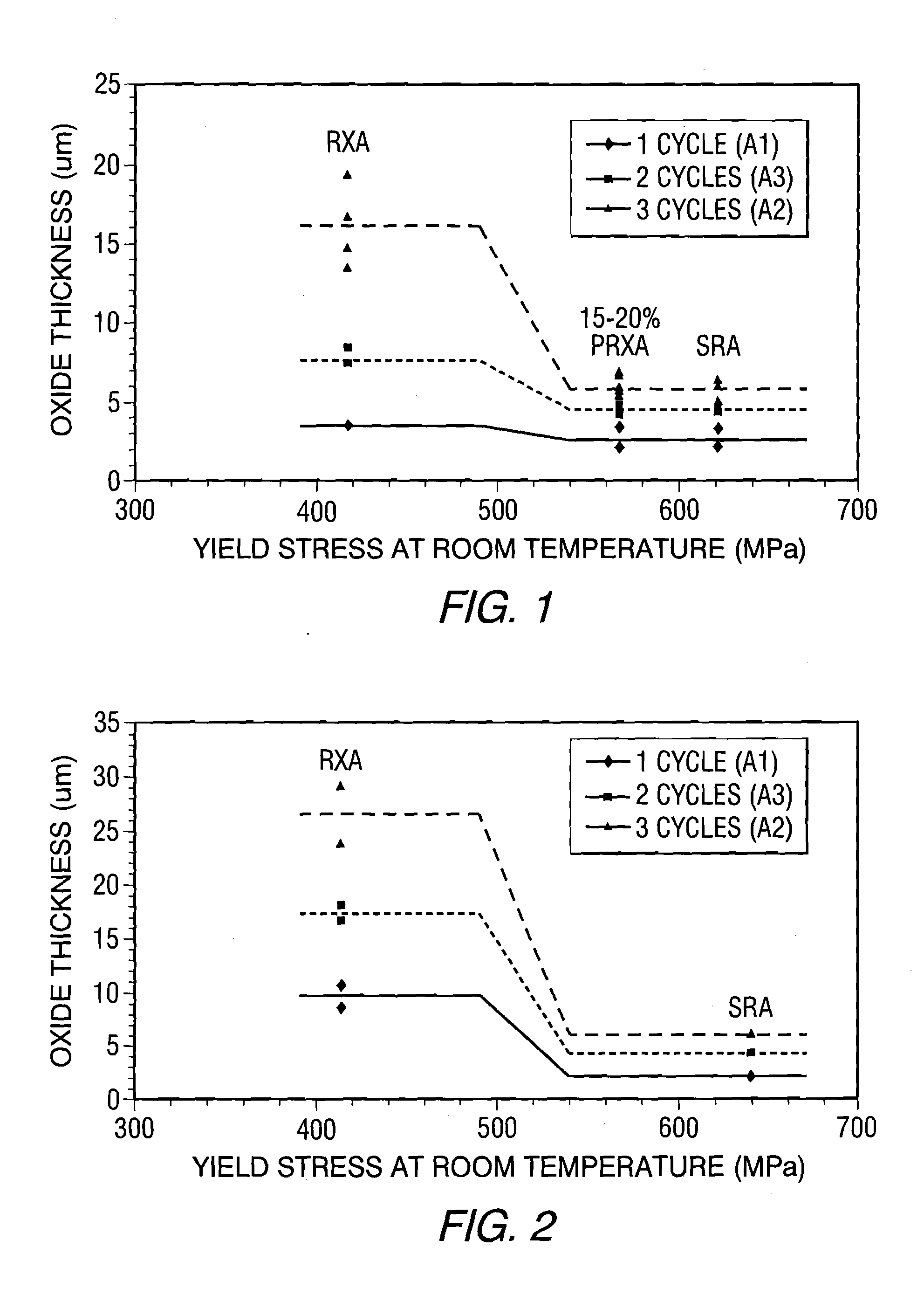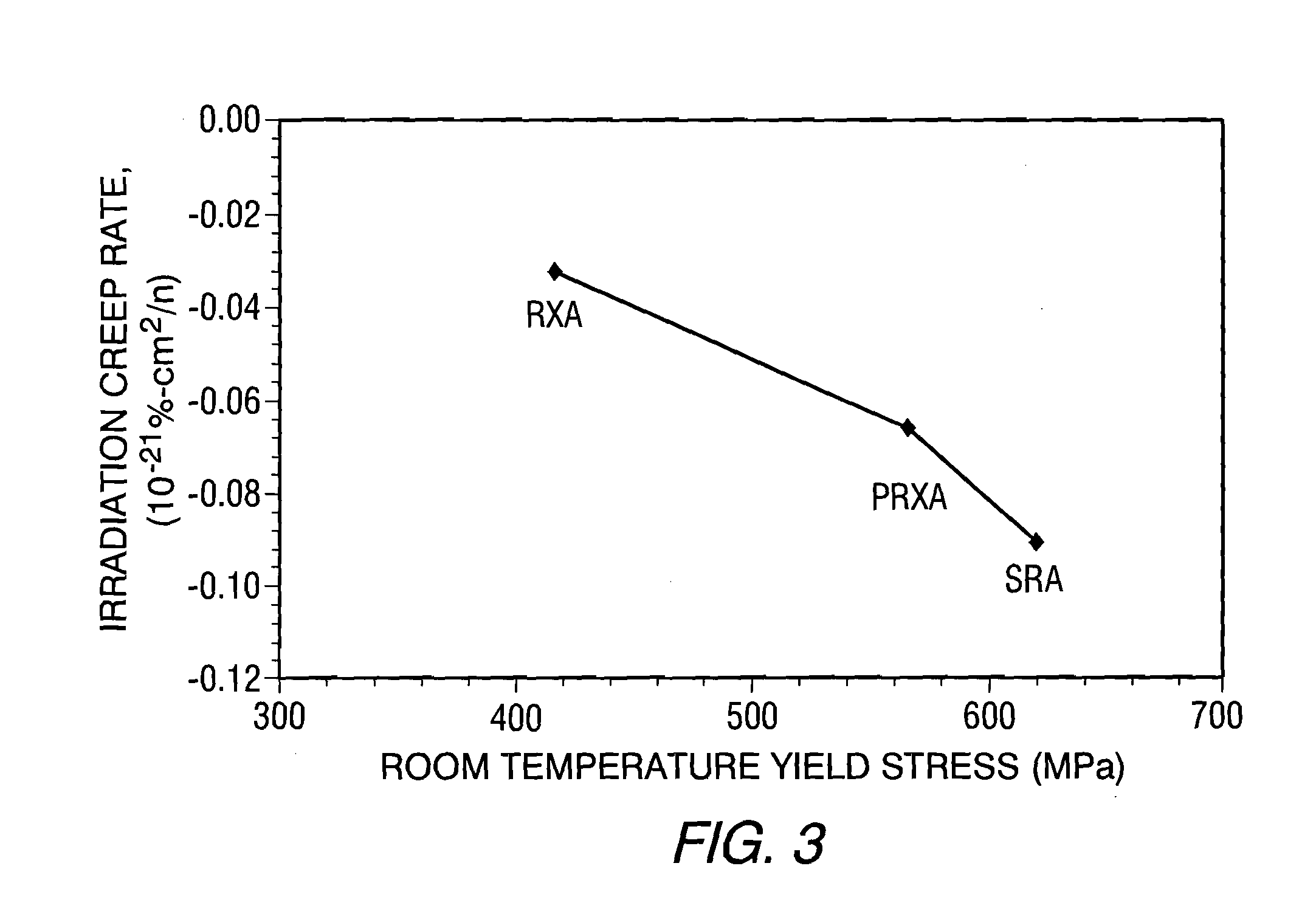Zirconium alloys with improved corrosion/creep resistance due to final heat treatments
a technology of zirconium alloys and final heat treatment, applied in the field of zirconium based alloys, can solve the problems of increasing alloy corrosion, increasing the thickness of the outer layer of non-protective materials, and increasing the corrosion of alloys in reactors, so as to improve the weld corrosion resistance, improve the method of alloy formation, and improve the effect of alloy chemistry
- Summary
- Abstract
- Description
- Claims
- Application Information
AI Technical Summary
Benefits of technology
Problems solved by technology
Method used
Image
Examples
first embodiment
[0085]the present invention is a zirconium alloy having, by weight percent, about 0.4-1.5% Nb; 0.05-0.4% Sn, 0.01-0.1% Fe, 0.02-0.3% Cu, 0.12-0.3% V, 0.0-0.5% Cr and at least 97% Zr including impurities, hereinafter designated as Alloy X1. This embodiment, and all subsequent embodiments, should have no more than 0.50 wt. % additional other component elements, preferably no more than 0.30 wt. % additional other component elements, such as nickel, chromium, carbon, silicon, oxygen and the like, and with the remainder Zr. Chromium is an optional addition to Alloy X1. Wherein chromium is added to Alloy X1, the alloy is hereinafter designated as Alloy X1+Cr.
[0086]Alloy X1 was fabricated into tubing and its corrosion rate was compared to that of a series of alloys likewise fabricated into tubing, including ZIRLO-type alloys and Zr—Nb compositions. The results are shown in FIG. 4. FIG. 4 shows that the in-reactor corrosion resistance of Alloy X1 is increased by a factor of 2.2 relative to ...
second embodiment
[0087]the present invention is a zirconium alloy having, by weight percent, about, about 0.6-1.5% Nb; 0.01-0.1% Fe, 0.02-0.3% Cu, 0.15-0.35% Cr and at least 97% Zr, hereinafter designated as Alloy X4. FIG. 4 shows that the in-reactor corrosion resistance of Alloy X4 is increased by a factor of 3.5 relative to Standard ZIRLO. A preferred composition of Alloy X4 has weight percent ranges for the alloy with about 1.0% Nb, about 0.05% Fe, about 0.25% Cr, about 0.08% Cu, and at least 97% Zr.
[0088]The preferred Alloy X4 was fabricated into tubing and its corrosion rate was compared with the corrosion rate of Standard ZIRLO. The chemistry formulations of Alloy X4, like Alloy X1, provides substantial improvements over the prior art as it relates to corrosion resistance in a nuclear reactor.
third embodiment
[0089]the present invention is a zirconium alloy having, by weight percent, about 0.2-1.5% Nb; 0.05-0.4% Sn, 0.25-0.45% Fe, 0.15-0.35% Cr, 0.01-0.1% Ni, and at least 97% Zr, hereinafter designated as Alloy X5. This composition should have no more than 0.5 wt. % additional other component elements, preferably no more than 0.3 wt. % additional other component elements, such as carbon, silicon, oxygen and the like, and with the remainder Zr.
[0090]A preferred composition of Alloy X5 has weight percent values for the alloy with about 0.7% Nb; about 0.3% Sn, about 0.35% Fe, about 0.25% Cr, about 0.05% Ni, and at least 97% Zr.
[0091]The preferred embodiment of Alloy X5 was fabricated into tubing and its corrosion rate was compared to that of a series of alloys likewise fabricated into tubing. FIG. 4 shows that the in-reactor corrosion resistance of Alloy X5 is increased by a factor of 3.0 relative to Standard ZIRLO.
[0092]The chemistry formulations of Alloy X5 provide substantial improvement...
PUM
| Property | Measurement | Unit |
|---|---|---|
| Fraction | aaaaa | aaaaa |
| Fraction | aaaaa | aaaaa |
| Percent by mass | aaaaa | aaaaa |
Abstract
Description
Claims
Application Information
 Login to View More
Login to View More - R&D
- Intellectual Property
- Life Sciences
- Materials
- Tech Scout
- Unparalleled Data Quality
- Higher Quality Content
- 60% Fewer Hallucinations
Browse by: Latest US Patents, China's latest patents, Technical Efficacy Thesaurus, Application Domain, Technology Topic, Popular Technical Reports.
© 2025 PatSnap. All rights reserved.Legal|Privacy policy|Modern Slavery Act Transparency Statement|Sitemap|About US| Contact US: help@patsnap.com



